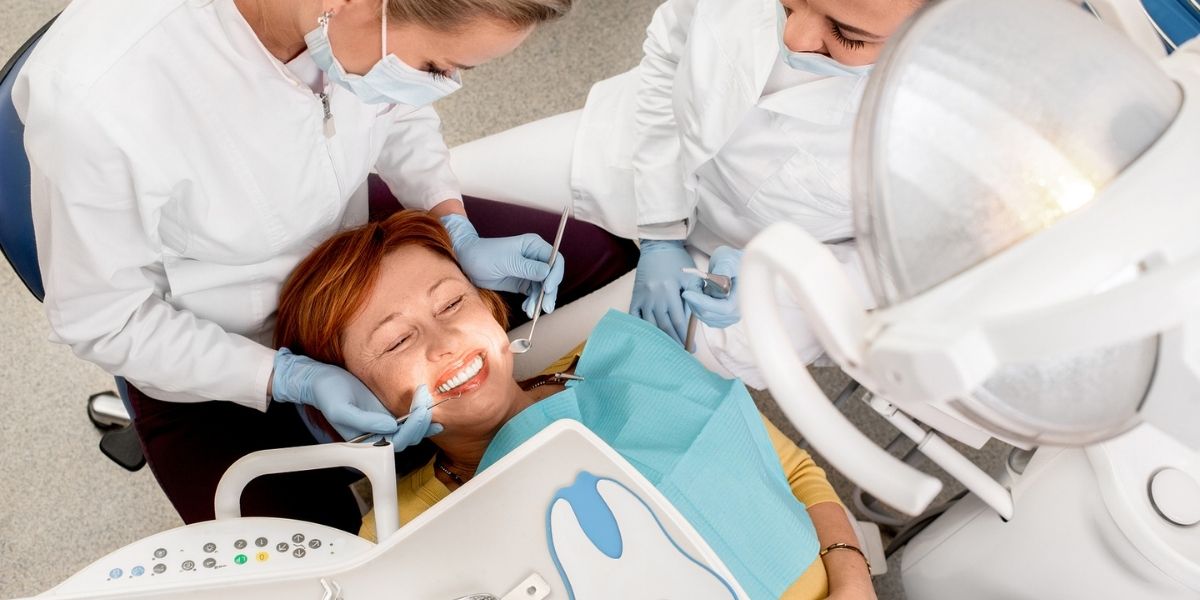Do You Need A Gum Graft Before Or After Invisalign?

Orthodontic treatment can greatly improve the quality of your smile, but gum disease or poor gum health could ruin it. The supporting structures around our teeth are compromised and may actually cause more harm than good. That’s why dentists recommend patients to undergo gum grafting before or after having Invisalign treatments in London, ON or braces.
Most middle-aged patients show signs of gum inflammation; however, you might not know about these unless severe symptoms show. This includes bleeding and sore gums, which can be avoided with proper preventative practices against gum disease.
That’s why it’s so important to make sure you have healthy gums before getting braces or Invisalign. A periodontist will check for any signs of disease or infection and provide a thorough exam of your mouth. You might need a proper treatment plan tailored just right based on what they find during this initial visit.
Periodontics and orthodontics
Periodontics focuses on gum health, what causes gum disease, and how to treat it. Meanwhile, orthodontics focuses on diagnosing and treating teeth misalignment. According to dentists, there is an interrelationship between the two dentistry specialties.
Your gum health is directly related to the positioning and alignment of your teeth. As you age, teeth can increase bacteria buildup, causing inflammation in the gums. This eventually results in bad breath and periodontal disease!
Receiving orthodontic treatment may be one way to keep your oral health, but not until you treat the infection first. One solution is to undergo a gum graft before or after getting Invisalign or braces.
Having said this, braces can put your teeth at risk when you have active gingivitis or periodontitis. Orthodontic treatment could compromise dental health significantly if an infection isn’t treated beforehand.
Periodontal procedures before orthodontic
Healthy mouths are necessary for braces. Make sure to check with your periodontist before getting them. They must evaluate the state of both you and your teeth- from inflammation down to bone structure! If there is an issue found during this exam, your dentist will recommend how best to restore your gums to optimal health again. This could include:
- scaling and root planing;
- pocket reduction surgery, and;
- gum graft before or after Invisalign.
Scaling and root planing
You can’t underestimate the power of good oral hygiene. Neglecting daily brushing and flossing or even just poor-quality brush heads could be what’s causing your gum disease!
Before getting started, you should know some things- these deep cleaning techniques require more than one appointment for optimal results. Even gum graft before or after getting braces or Invisalign will take time to ensure the safety and accuracy of your treatment.
Your dentist will remove all the plaque and tartar from above your gum line, cleaning it down your pocket. Next, they’ll begin root planning by smoothing out teeth roots for better attachment between gums and tooth enamel. This process takes some time, so you may need to make sure you’re relaxed on your dentist’s chair.
Pocket reduction surgery
Gum tissue and bone should attach firmly to your teeth. This is the foundation for a healthy smile! Periodontal disease weakens this support, which forms pockets around your teeth.
If you have severe gum disease that can’t be treated with antibiotics or root planing, your dentist might recommend pocket reduction surgery.
Compared to gum grafting, this type of surgery done before or after getting Invisalign treatment is quicker. Reducing pockets in our mouths takes about two hours and is typically performed by a periodontist (a dental surgeon who specializes in gums).
The patient will need to take some medicine beforehand, so make sure you discuss this with your dentist before considering the surgery!
Gum grafting
If you have receding gum tissue, your periodontist may suggest a gum graft before or after an Invisalign treatment to help build a stronger jawline and prevent further recession.
Gum grafting is a technique that involves placing new tissue in an area where little or no gum tissue currently exists. This procedure’s goal should either be to prevent further recession of your gums or to cover exposed root surfaces. This is done to avoid or stop your sensitivity to foods like iced tea or coffee.
After treating the dental disease, it’s important to keep gums healthy by working closely with dentists so they can provide regular maintenance care to maintain good oral hygiene habits long-term.
You may also discuss with your dentist if a gum graft before or after getting braces or Invisalign is necessary.
Choosing Invisalign?
Clear aligners or Invisalign are a new and more convenient alternative to traditional braces. This might be the perfect solution if you’re at risk for gum disease! With clear plastic brackets that hold your teeth in place – no wires or rubber bands needed; just slip on like regular clothes.
They provide a new and improved alternative to traditional braces to help you straighten your smile while controlling gum disease.
However, if you already have active gingivitis, you first have to deal with it. Your dentist may suggest a gum graft before or after getting Invisalign.
Aligners are removable, so you can brush and floss normally while wearing them. They also help prevent decay in your gum’s pocket, which could lead to toothache or, even worse – extraction!
Straight teeth for better oral health
Straight teeth are the ultimate goal for many people. The benefits of having straight, healthy gums are an attractive bonus! And if you want a more aesthetically pleasing smile without any work on your part? You can get there faster by wearing aligners that help realign the tooth into the proper position for 22 hours per day.
As your teeth move into alignment, it will become easier to take care of them in general because straightening out any crooked areas helps with periodontal health!
The best way to have a successful orthodontic treatment is with the help of an experienced London dentist and periodontist. When we work together, we can ensure that your oral health will be optimally maintained in both short-term goals and long-term treatments down the line!


